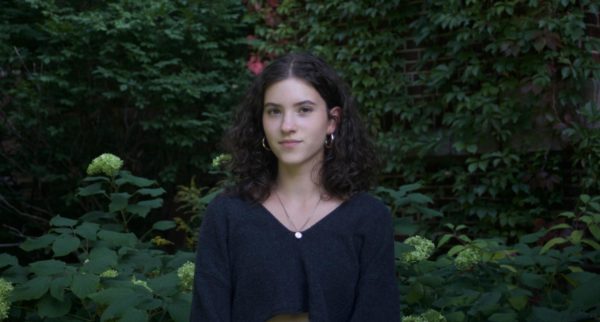Opinion | LGBTQ+ summit could’ve focused more on intersectionality
The 2022 ETHS LGBTQ+ summit was relatively well-received. Most students enjoyed the seminars and the drag show, along with the rich sense of community felt throughout the day. However, some students felt like intersectionality wasn’t embraced at the summit as much as it could’ve been. While most of the emcees at the event were queer people of color, there were only a few specific seminar options available for Black students, and none for any other queer minority groups. Some felt like it was too difficult to get a spot at one of the Black seminars, and others recount experiences of white people attending the seminars tailored to the Black queer experience. Overall, although the approach to intersectionality at the summit was good, there are still improvements that should be made in future years.
“There was one seminar that was based on intersectionality which was Black, Loud and Queer. I mean, it was good that we had a Black, trans, queer DJ do that for us. But that was really [one of] the only things we had and we talked about it in that seminar,” Payton Matthews, a Black queer freshman who attended the summit, states.
The Black, Loud and Queer seminar was definitley a success; another queer Black freshman who attended the seminar says “It felt like I could really connect with people who understood me, and who were going through the same things that I was. I felt like I could just say what I wanted to without having to be judged.”
The discussions that were initiated at the seminar were intended to have this effect. Black, Loud and Queer clearly provided a safe place for queer Black students, and was a truly great space for people to share their experiences without judgment or criticism.
However, Matthews points out a few things that could’ve been improved regarding breakout seminars at the summit. “I just think it would really be better if they provided more representation and more seminars that talk about the [Black queer] experience.”
While it may seem like there isn’t any need for other Black queer seminars, the other student explains why that’s not the case.
“I mean overall there were only two [sessions] and they were both limited, because there weren’t enough seats for everyone.”
This limitation leaves these BIPOC students without a space to connect. This was a common issue at the summit; many people who signed up for the summit late were denied attendance or did not get to choose the seminars they wanted to go to. Creating more seminars tailored for queer students of color would give those who sign up later the chance to engage and have fun with other members of their community at the seminars.
Another issue Matthews mentions is the fact that other queer minority students may not have had the opportunity to attend a summit specifically for them.
“There wasn’t [a seminar] for Latin X students or Asian students. So I think they need to focus on, you know, representation of the queerness of all different races.”
Because Black, Loud and Queer was such a great way for Black students at the summit to connect with a community of others who understood their experience, it’d be incredibly beneficial for next year’s summit to include more seminars focusing on different minority groups. Giving queer minority students a place to be themselves in a smaller, more specific group will absolutely improve the summit experience for many. It may also increase students’ interest in attending the summit.
“The LGBTQ experience is not the same if you’re white [versus] if you’re a person of color.”
The other freshman says, summing up this idea perfectly. While it’s important for the whole LGBTQ+ community to come together at the summit, it’s equally as important to provide queer students of color with a place to speak out on their unique experiences. Intersectionality is incredibly important when addressing LGBTQ+ issues, since different people have had different experiences in the community.
“There was a white girl at the Black, Loud and Queer seminar, which was weird,” Matthews states.
While this could’ve easily been an administrative error, it’s important to remember that the Black Loud and Queer summit was specifically designed for Black queer students to share their experience, and was not a space for white students. At future summits, white students need to be cognisant of the spaces set aside for queer students of color, since, as stated previously, the LGBTQ+ experience is not the same for those who aren’t white.
Even though some students had differing opinions on the effectiveness with which the summit approached intersectionality, there was an underlying feeling of optimism for future summits.
“I think in future summits, they can improve by having…more seminars based on intersectionality and have more open dialogue,” the freshman says.
Including more discussion seminars focusing on intersectionality and everyone’s unique experience will make the LGBTQ+ summit a more open and affirming place for students of color who attend. Creating more spaces for Black queer students and introducing spaces for other groups, such as queer Latinx and Asian students, will definitely improve the summit experience for many, as well as creating a more welcoming environment for typically underrepresented people. In future years, ETHS should strive to give every LGBTQ+ student a chance to share their voice and feel comfortable in their own skin.
Matthews sums up this idea perfectly, stating, “Overall, just adding more intersectionality because everyone’s experience is different, especially based on race, gender, and abilities.”
Your donation will support the student journalists of the Evanstonian. We are planning a big trip to the Journalism Educators Association conference in Philadelphia in November 2023, and any support will go towards making that trip a reality. Contributions will appear as a charge from SNOSite. Donations are NOT tax-deductible.





